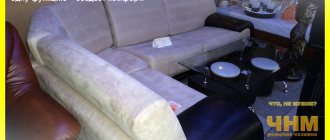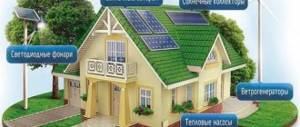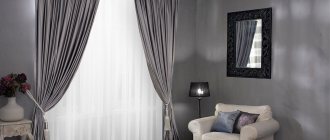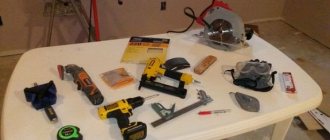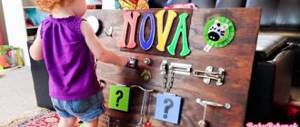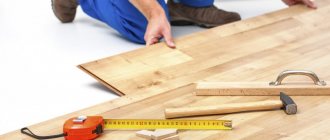Lumber in large quantities is usually sold in terms of square (flat boards for sheathing, cladding, decorative products) and cubic meters. But it is not always convenient to carry out calculations in precisely these units of measurement; sometimes you need to know the number of boards of a certain length.
Table 1. Memo table - number of boards per cubic meter*
| Board dimensions, mm | Volume of one board, cubic meters. | Number of boards per cubic meter, pcs. |
| 22x75x6000 | 0,0099 | 101 |
| 22x100x6000 | 0,0132 | 75 |
| 22x150x6000 | 0,0198 | 50 |
| 22x200x6000 | 0,0264 | 37 |
| 25x75x6000 | 0,01125 | 88 |
| 25x100x6000 | 0,015 | 66 |
| 25x150x6000 | 0,0225 | 44 |
| 25x200x6000 | 0,03 | 33 |
| 25x250x6000 | 0,0375 | 26 |
| 32x75x6000 | 0,0114 | 69 |
| 32x1006000 | 0,0192 | 52 |
| 32x150x6000 | 0,0288 | 34 |
| 32x200x6000 | 0,0384 | 26 |
| 32x250x6000 | 0,048 | 20 |
| 40x100x6000 | 0,024 | 41 |
| 40x150x6000 | 0,036 | 27 |
| 40x200x6000 | 0,048 | 20 |
| 40x250x6000 | 0,06 | 16 |
| 50x100x6000 | 0,03 | 33 |
| 50x150x6000 | 0,045 | 22 |
| 50x200x6000 | 0,06 | 16 |
| 50x250x6000 | 0,075 | 13 |
| 75x75x6000 | 0,033 | 29 |
| 75x100x6000 | 0,045 | 22 |
| 75x150x6000 | 0,0675 | 14 |
| 75x200x6000 | 0,09 | 11 |
| 75x250x6000 | 0,1125 | 8 |
| 100x100x6000 | 0,06 | 16 |
| 100x150x6000 | 0,09 | 11 |
| 100x200x6000 | 0,12 | 8 |
| 100x250x6000 | 0,15 | 6 |
| 150x150x6000 | 0,135 | 7 |
| 150x200x6000 | 0,18 | 5 |
| 150x250x6000 | 0,225 | 4 |
| 200x200x6000 | 0,24 | 4 |
| 200x250x6000 | 0,3 | 3 |
| 250x250x6000 | 0,375 | 2 |
*Numbers in the last column are rounded to the nearest whole number.
Types of boards and calculation features
There are several types of boards on sale, and the parameters for coniferous species are standardized by GOST 8486-86. Dimensions are determined (for softwood lumber) by GOST 24454-80.
Types of boards:
- edged board is the most popular type of material. This is a more or less smooth board with even planes and no convex elements. The cross-section is strictly rectangular;
- strict - edged board, all edges of which (except for the ends) are processed by planing to obtain the most smooth surface possible, without scoring or roughness;
- semi-edged - the sides and one of the edges are processed, the other end has a wane (remnants of bark and/or bast);
- unedged. Only the sides are processed, the ends have a wane. Both semi-edged and unedged can have a blunt wane or a sharp one (see illustration above) in the shape of the end;
- both sexes are croaker or plank. In the first variety, only one face is processed, the second is rounded. There are no ends as such. A plank slab has one face that is flat, the other is only partially processed. The ends are very strongly bevelled;
- sleepers. Very thick unedged (c), half-edged (b) or edged (a) boards;
- timber
The last two types of lumber are considered to be very conditional, so we will practically not consider them.
It is also worth mentioning the finishing board - lining, imitation timber, block house and so on.
Their quantity is calculated in square meters, since such a board is not used for conventional structures, only for surface cladding.
The quantity of tongue-and-groove boards (floor boards) in a package is also calculated in square meters.
Types and types of lumber, its features and scope of application
Before calculating how many boards are in a cube, you should decide on the type of material that will be used in the process of constructing or finishing a particular object. The processing features and appearance of the lumber determine its possible area of use. We invite you to familiarize yourself with the most common types and their main purposes.
Lumber comes in different types and types
Edged timber
The timber has a square or rectangular cross section. Its linear parameters usually exceed 100 mm. For production, the core of wood is used, which is processed on four sides. The result is lumber of the desired geometry, but without finishing the surfaces. The standard length of the product is usually 6 meters. When deciding how to calculate cubic capacity, this linear parameter must be taken into account.
In demand during the construction of capital buildings. Given the quality of the surface treatment, additional finishing will be required in the future.
Edged timber is actively used in the construction industry
edged timber
Planed timber
Solid wood is used to make planed timber. The choice is made in favor of logs that do not have defects, with transverse dimensions of more than 150 mm. The most widely used timber is with dimensions 100×100; 100×150; 150×150; 150×200 mm. The latter standard size is most often made to order and has a cost higher than analogues with smaller geometric parameters.
Planed timber is widely used in the construction of residential buildings and the installation of internal partitions. The high quality of the surface allows you to avoid additional finishing.
Planed timber has a smooth surface
planed timber
Planed block
The cross-sectional shape may vary. Manufacturers offer bars with a square, rectangular or other cross-sectional shape. Requirements have been established for the aspect ratio of the finished product. Their width cannot be twice the thickness. The last linear dimension can reach 100 mm.
Planed products subjected to special processing have a smooth surface. They are widely used in the construction of various buildings, the appearance of which is subject to increased demands. Actively used in the furniture industry.
Planed bars have a wide range of uses
Edged block
Unlike planed edged timber, it does not undergo additional finishing processing. This significantly reduces its cost. Widely used in the construction of frame buildings and installation of structures intended for installation of facing material.
Edged timber can strengthen any structure
Edged board
The thickness of such lumber can reach 100 mm, and the transverse dimensions in this case should be at least twice as large. During the production process, wood is processed from all sides. As a result, it is possible to ensure the necessary geometric accuracy and relative evenness of the surface.
Edged material is used when performing various types of work. Especially popular is the inch board, the size of which is numerically equal to 1 inch (25 mm). This thickness is in demand when constructing sheathing, floors and many other surfaces.
How to calculate a cube? It is enough to multiply the linear parameters to find the volume of one product. Then divide one cube by the resulting value. This will allow you to find out how many products will be in a cubic meter. Knowing the required number of products and how many of them are in a cube, it is easy to calculate the order volume.
Edged materials are indispensable in the construction of edged boards
Floor board
Designed specifically for flooring installations. It has a width of 85÷140 mm and a thickness of 27÷45 mm. The choice of linear parameters of the product is made taking into account the subsequent operational load. An online calculator of boards in a cube will allow you to calculate how much material you need to purchase to install a floor covering of a certain area.
Floorboards are intended for flooring
floorboard
Unedged materials
Unlike edged material, such lumber has a lower cost, since its surface has partially sawn or unsawed edges (wane). Because of this, it is most often used in the manufacture of fences or the construction of rough surfaces.
Unedged materials have an affordable price per cubic meter
Simplified calculation of board volume
Calculations are performed using the simplest geometric formula: the volume of a parallelepiped is equal to the product of its width times its length and height.
In our case, a is the length of the lumber, and b and c are the section dimensions.
That is, for a board with a cross section of 22x100 mm of a standard six-meter length, the volume will be
0.022x0.1x6=0.0132 sq.m.
Note! All calculations are carried out in meters, so do not forget to convert the data for the section of the board, traditionally presented in millimeters, into meters!
Accordingly, in one cubic meter of such boards there will be
1/0.0132=75.76 pieces
In this case, naturally, only an integer is taken into account - that is, for one cubic meter we accept the purchase of 75 pieces of boards 22x100x6000 m.
It is important to understand that in this case the name “board cube” is conditional - it is not a stack in the shape of a cube with sides equal to one meter, but a parallelepiped with a length of 6 m.
Table 2. Nominal thicknesses and widths of lumber* with parallel edges, edged and unedged, from softwood.
* Lumber produced for export can also have sections 63x160; 90x90; 90x125; 50x300; 63x300; 75x300; 100x300 mm. By agreement with the customer, it is permissible to produce the same sizes for the domestic market of the country.
Table 3. Nominal lengths of edged and unedged boards, as well as timber*.
| Type of material | Length, m |
| All types of parallel edge lumber for export and domestic market | 1…6.5 m, step 0.25 m |
| All types for export | 0.9 m (3 ft) to 6.3 m (20 ft), 0.3 m (one foot) increments |
| Boards and timber for the production of containers and packaging | From 0.5 m, step 0.1 m |
| Bridge beam | 3.25 m |
*Permissible deviations in length +50/-25 mm
Important: nominal dimensions are given for a relative wood humidity of 20%. Accordingly, at other humidity values it is necessary to make an allowance for material shrinkage, standardized by GOST 6782.1-75 .
Thus, according to Table 1 of GOST 6782.1-75, for a board thickness of 22 mm, the shrinkage value at a moisture content of 7% compared to the normal moisture content for lumber of 20...22% is 1.2 mm. Accordingly, the thickness of the board will decrease to 20.8 mm. According to the same table, the width of a 100 mm board will decrease by 4.8 mm - that is, it will be equal to 95.2 mm. Shrinkage along the length of lumber (along the fibers) is noticeably less in percentage terms and can be neglected. Thus, when recalculating excessively dry boards, their number in one cubic meter will be
1/(0.0952x0.0208x6)=84.2
And if such a “recalculation” is beneficial for the buyer, then in a more typical situation, when, due to violation of storage conditions, a dry board gains excess moisture, the figure turns out to be different. In fact, the boards swell, and the increase in size can reach 2...11%. Even if we assume a 3% increase in volume, the buyer's loss will be about 8 boards. Therefore, it is recommended to check the moisture content of wood when purchasing using a moisture meter or by weighing .
Table 4. Specific gravity of wood at different relative humidity.
How many boards per cubic meter: table of standard sizes
Some people ask an interesting question - how many square meters are in a cube? In fact, it is impossible to answer it! After all, in order to determine this, you need to at least know the thickness of the board. Without this parameter, no calculations will be possible. Let's try to understand how to calculate cubic capacity.
When processed perfectly, no painting is required. A simple varnish is enough
This does not present any great difficulties, but it requires care. We need to understand how many boards are in a cube. And to do this you need to calculate the cubic capacity of one of them by size. For example, a board with a cross-section of 1000x250 mm and a length of 4 m. Then the calculations, after converting the units of measurement into meters, will be as follows: 0.1 × 0.025 × 4 = 0.01 m3. This will be the answer to the question of how to calculate the cubic capacity of the board.
If the material lay closely, the volume could be measured with a tape measure. But then the wood quickly deteriorates
How many boards are in a cube: table of average values
For example, there are boards with certain sizes. How to calculate a cube of such lumber by the number of boards? You can use the following table:
| Board size, mm | Volume of 1 board, m3 | Number of boards in 1 m3, pcs. | Volume of overpayment when rounded down, % |
| 25x150x4000 | 0,015 | 66,7 | 1 |
| 40x150x4000 | 0,024 | 41,6 | 0,7 |
| 20x100x6000 | 0,012 | 83,3 | 2,8 |
| 25x100x6000 | 0,15 | 66,7 | 1 |
| 40x100x6000 | 0,024 | 41,6 | 0,7 |
| 50x100x6000 | 0,03 | 33,3 | 1 |
| 25x150x6000 | 0,025 | 44,4 | 1 |
| 30x150x6000 | 0,027 | 37,04 | 0,01 |
| 40x150x6000 | 0,036 | 27,8 | 2,9 |
| 50x150x6000 | 0,045 | 22,2 | 0,9 |
| 25x200x6000 | 0,03 | 33,3 | 1 |
| 40x200x6000 | 0,048 | 20,8 | 3,8 |
| 50x200x6000 | 0,06 | 16,7 | 4,2 |
It is important to know! To calculate how many square meters are in a cubic meter, you need to know all the dimensions of the board. Without information about length, width and thickness, nothing will work.
Having figured out how to calculate cubic meters, you need to understand how to find out how much a board cube weighs.
If the wood is well dried, it can be packed in polyethylene
Average weights at different humidity levels
| Breed name | Crude, kg/m3 | Dry, kg/m3 |
| Birch | 880 | 650 |
| Oak | 990 | 720 |
| Spruce | 710 | 450 |
| Cedar | 700 | 440 |
| Larch | 840 | 670 |
| Linden | 750 | 500 |
| Aspen | 750 | 500 |
| Pine | 810 | 510 |
| Ash | 960 | 700 |
It turns out that one cube of ash will be much heavier than the same volume of linden. This should be kept in mind when planning your transportation.
Calculation nuances for unedged boards
In this case, it is not rational to calculate the actual volume of each board to determine the quantity: in a stack or package, an unshaped board takes up almost the same amount of space as an edged one. Therefore, it is not the actual cross-section that is taken into account, but its “overall size”.
Of the two widths - a1 and a2 - the larger one is accepted, and the calculation is carried out based on it. That is, 6 meters of an unedged board with a thickness of 22 mm with a bottom width of 100 mm and a top width of 75...82 mm (for an unedged board such fluctuation is permissible) will take up the same amount of space as 6 m of an edged board with a thickness of 22 mm and a width of 100 mm.


